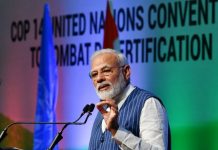Manmohan Singh
 Harinder Baweja, Editor, News & Investigations
Harinder Baweja, Editor, News & Investigations
FOR THE five years that he remained Prime Minister, Dr Manmohan Singh was credited with little. The only things that came his way were invectives — he is weak, he is a selected, not elected PM, he takes directions from the Madam at 10 Janpath. In short, that he is a mere puppet, a rubber stamp, a man who was selected not because he had any great vision or political acumen; but because he lacked the one singular thing: Ambition.

Hindsight often lends itself to great wisdom and as Verdict 2009 is now being hailed as a victory of the troika, Sonia and Rahul Gandhi stand out as the two leaders who reaped great benefit for the Congress Party. The third (not necessarily in that order) stands tall as the Governance Man. As senior Congressman Kapil Sibal put it, “The Manmohan Singh government’s contribution was huge and so was his persona, his gentlemanliness and statesmanlike demeanour. In contrast, the Advanis and Karats were seen as political animals and power-hungry opportunists.”
The invectives — again on hindsight — seem to have worked. Manmohan has become the only prime minister since 1971 to win a successive victory after serving a five-year term. And suddenly, many in the Congress who have rediscovered the merits of the ‘selected’ Prime Minister are all praise for achievements they never credited him with — till the EVMs threw up the magical numbers.
The mother and son Gandhi duo had, however, invested faith in him throughout — so much so that Manmohan became the only Congressman to have ever been named as the party’s candidate in advance. On earlier occasions, it was perhaps never necessary, as the Gandhi surname always came with the prime ministerial tag firmly in place. In an amazing display of faith, just before the big battle, Sonia Gandhi covered her photograph with her hand as she held up the manifesto, and said: he is our prime ministerial candidate. And so, as contemporary history is now being written, no analysis of the Victory is possible without accolades being sung to the tune of ‘Singh is king’.
His lack of aggression was ridiculed in a rough-playing polity. But the ‘weak’ PM’s decency took him past the finishing line
“Sonia chose well in 2004 and Manmohan performed well,’’ is the common refrain at 24, Akbar Road, the party headquarter that has come alive with fresh energy. But there is also an inside story; a lesser known secret. For the record, of course, Rahul Gandhi wasted not a second when asked the rather blunt question — Is Manmohan Singh negotiable? — by a select group of 10 journalists, including this reporter, he was interacting with. The answer could have been different. After all, it was an informal session. But, a few hours later came an email in which he chose to put this question on record and the answer read, “From my side, I know — and I do know my mother’s views on this — that he is the best prime ministerial candidate. He is our candidate and we are going to stick by him. Like we did in the nuclear deal.” And now for the inside story. A very close aide of the Gandhi scion also let it be known that the young pilgrim of progress was working to a longterm agenda and was not thinking of the next five years. That was well-known. What was not, was that because of this long-term view, defeat would not have come as an irreparable blow. To quote the aide, “It will not be a big deal.”
This little secret is important to make the point that even within the Congress, no one, senior or junior, had scripted a tally of 206 for the grand old party (taunted alternatively as buddiya Congress and guddiya Congress by Narendra Modi). To the contrary, some were prepared for defeat and that’s why hindsight lends itself to great wisdom, for, the UPA emerged only a whisker away from the 272 figure. But their number shot up to 322 with help from unlikely, unconditional support by UP Chief Minister, Mayawati.
Till a little before the electoral battle began, Manmohan was not seen, by his own party, as being worthy of driving the Congress’ ad campaign. All posters and campaigns championed the trio with the slogan: aam aadmi ke badhte kadam, har kadam par bharat bulandh. It was in stark contrast to the BJP, which positioned its entire campaign around LK Advani and the slogan: mazboot neta, nirnayak sarkar (determined leader, decisive government). The irony is inescapable — the ‘weak’ prime minister is the one who has emerged true to the BJP slogan.
 KAPIL SIBAL is not wrong when he says that Advani and Modi contributed to Manmohan’s victory by running a negative campaign. Interestingly, BJP insiders agree that Manmohan’s (self) image of sobriety and decency went a long way in the UPA’s victory. If the loyal urban, middle-class voter deserted the BJP and swung towards Manmohan Singh for his record of governance and the Congress’ promise of stability, it was due, again, to Advani’s negative campaign. The Congress trio shone brighter than Advani, Rajnath Singh and Varun Gandhi, who collectively revived toxic memories of Mandal and Mandir-style exclusivist, identity-based politics. Abhishek Singhvi, national spokesperson and Congress strategist, says, “Our troika is unmatched and caught the BJP unawares. The PM symbolised decency in politics, the Congress president symbolised stability and sacrifice. Rahul Gandhi symbolised youth power and the ability to experiment. Their mutual chemistry and DNA made it an unbeatable combination.”
KAPIL SIBAL is not wrong when he says that Advani and Modi contributed to Manmohan’s victory by running a negative campaign. Interestingly, BJP insiders agree that Manmohan’s (self) image of sobriety and decency went a long way in the UPA’s victory. If the loyal urban, middle-class voter deserted the BJP and swung towards Manmohan Singh for his record of governance and the Congress’ promise of stability, it was due, again, to Advani’s negative campaign. The Congress trio shone brighter than Advani, Rajnath Singh and Varun Gandhi, who collectively revived toxic memories of Mandal and Mandir-style exclusivist, identity-based politics. Abhishek Singhvi, national spokesperson and Congress strategist, says, “Our troika is unmatched and caught the BJP unawares. The PM symbolised decency in politics, the Congress president symbolised stability and sacrifice. Rahul Gandhi symbolised youth power and the ability to experiment. Their mutual chemistry and DNA made it an unbeatable combination.”
The Slumdog Millionaire tune yielded dividends. “Jai Ho for Bharat, Jai Ho for the poor and Jai Ho for the people of India,” is how Congress general secretary, Digvijay Singh summed up the Congress’ victory. Only last year, the mild-mannered Manmohan had surprised his own colleagues by displaying nerves of steel when pushing the nuclear deal. He risked the fall of his government, and if the electorate did not punish the UPA with anti-incumbency, the credit, in large measure, must go Manmohan Singh’s way.
It would, probably, be accurate to say that the ‘invisible’ Manmohan turned out to be a factor. After his bypass surgery, his doctors wouldn’t allow him more than a dozen-odd public rallies, but Advani ensured that the spotlight stayed firmly on the invisible Manmohan. A senior Congressman says, “The prime minister is not a great orator but he didn’t need to speak. Advani did all the talking on his behalf.” And because the BJP supremo pitched the battle presidential-style, Manmohan stands taller by sheer comparison.
Even by his own colleagues, Manmohan was always seen as a half — half a man, half a politician, half a leader. Adjectives always preceded any introduction, but post-elections, the technocrat-prime minister, economist-prime minister has metamorphosed into a complete person, a complete politician, a man worthy of occupying the top seat in government.
A Congressman says, ‘The PM is not a great orator but he didn’t need to speak. Advani did it on his behalf’
Sonia Gandhi has demonstrated that she did choose well. The chemistry of the troika is evident even now. If Sonia Gandhi’s demeanour is any indication, she respects the man and understands his importance. The two made their first appearance together on May 16 — after it was clear that the mandate had gone squarely in their favour — and both displayed faith and belief in each other in different ways. She waited by the door of her house till he drove in, and walking upto him, congratulated him: “mubarak ho”. The photo-op told a story in itself. It spoke of a partnership the two had cemented. The electorate appears to have voted for this partnership. As a BJP leader remarked, “It’s worked to their advantage that while Sonia spent time on the party, Manmohan had a free hand at governance.”
A neo-confident Manmohan is already visible. Yes, Karunanidhi and Mamata Banerjee could prove difficult allies but there is also the quiet reassurance that they will not come close to playing the role Prakash Karat and his comrades did. But even while he was managing the knives that came out each time he pushed liberalisation, disinvestments or the nuke deal, his government stayed focussed on the common India, on the idea of inclusion. This is how Rahul Gandhi articulated the government’s and the party’s social agenda in his interaction with the 10 journalists: “We have two models before us. One is the private sector, India Shining and a focus on issues that don’t impact the people. The people of India have already demonstrated their silent resilience to this. The other model is growth with distribution, — job guarantee, food in schools and RTI. This is inclusion not just of the poor, but also of the middle classes. That is the idea of the aam aadmi.”
Social inclusion is only one of the many things that has seen Manmohan Singh rise in stature. Verdict 2009 proves that he is not just the Gandhis’ or the Congress’ aam aadmi.˚
shammy@tehelka.com












